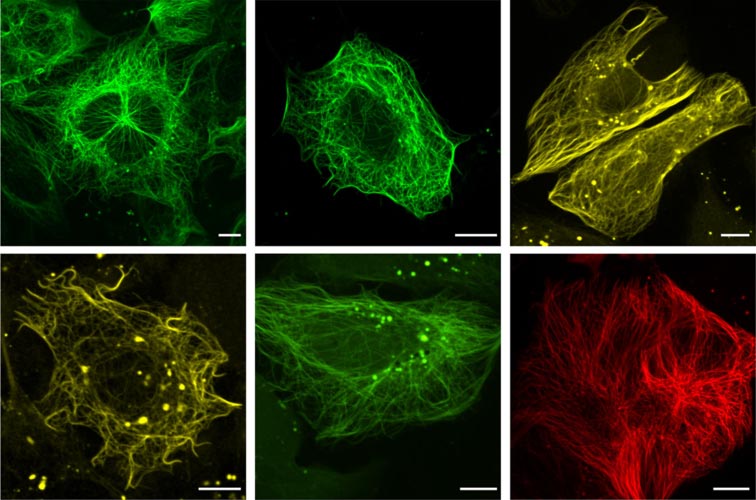Fluorophore conjugation is a technique used to label and detect biological molecules with fluorescence. Fluorophore conjugation is used in a wide range of applications, including biochemical characterization, drug development and gene expression analysis.
Fluorophores are molecules that absorb light at one wavelength and then emit light at a longer wavelength. This emission can be detected and used as a “marker” for a particular molecule. Fluorophore conjugation involves attaching a fluorescent molecule to another molecule of interest, such as a protein or nucleic acid. This conjugated molecule can then be detected using a variety of techniques, such as fluorescence microscopy or flow cytometry.
The most commonly used fluorophore molecules are organic dyes, such as fluorescein, rhodamine, and Texas red. Organic dyes have the advantage of being inexpensive, stable and easy to use. However, they have limited application due to their limited brightness and short emission wavelengths.
Alternatively, proteins or peptides can be genetically modified to incorporate a fluorescent tag. This fluorescent tag is often a fluorescent protein, such as green fluorescent protein (GFP) or its variants. Fluorescent proteins have the advantage of being highly fluorescent, with emission wavelengths in the visible range, and are relatively stable in biological systems.
Fluorophore conjugation is a versatile technique that can be used to label and detect a wide range of biomolecules, including proteins, nucleic acids and carbohydrates. In addition, fluorophore conjugation can be used to track the movement of molecules within the cell, or to monitor the expression of certain genes.
Fluorophore conjugation is an important tool for a wide range of biological applications. For example, it is used in drug development to identify compounds that interact with specific target molecules. It can also be used in gene expression analysis to determine which genes are active in a cell. In addition, fluorophore conjugation can be used to study protein-protein interactions and protein localization within the cell.
Fluorophore conjugation is a relatively simple process, but it requires careful consideration of several factors. For example, the choice of fluorophore molecule and the concentration of the conjugate must be carefully controlled to ensure optimal performance. In addition, the environment in which the conjugation is performed must be carefully controlled to ensure the stability of the conjugate. Finally, the method of detection must be carefully chosen to ensure the highest signal-to-noise ratio.
Overall, fluorophore conjugation is a powerful technique for labeling and detecting biological molecules. It can be used in a wide range of applications, from drug development to gene expression analysis. With careful consideration of the various factors involved, fluorophore conjugation can provide a powerful tool for furthering our understanding of biological systems.









